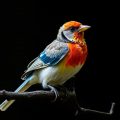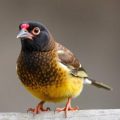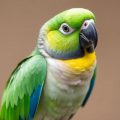Содержание
- Why Bird Brains Are Different (and Why That Matters)
- Causes of Seizures and Neurologic Disorders in Birds
- How Veterinarians Diagnose Neurologic Disease in Birds
- Emergency Response: What to Do When Your Bird Has a Seizure
- Treatment Options: From Acute Care to Long-Term Management
- Long-Term Outlook: Prognosis and Quality of Life
- Prevention and Risk Reduction
- Species-Specific Notes: How Different Birds Show Neurologic Disease
- Diagnostic and Treatment Checklist: What to Bring to the Vet
- Real-Life Examples (Composite Cases)
- Frequently Asked Questions
- When to Seek Immediate Veterinary Care
- Practical Tips for Living with a Bird Prone to Neurologic Episodes
- Research and Emerging Therapies
- Summary Checklist for Bird Owners
- Further Resources
- Conclusion
SQLITE NOT INSTALLED
Birds are remarkable creatures — quick, bright, and endlessly entertaining. Yet beneath their fluttering feathers and curious eyes lies a nervous system as complex as a small orchestra, and when that orchestra falls out of tune, the result can be frightening: seizures and other neurological disorders. Whether you’re a parrot parent, a falconer, or someone who found an injured pigeon on the sidewalk, recognizing, understanding, and responding to avian neurological problems can make the difference between recovery and serious long-term harm.
In this article I’ll walk you through how avian brains work, how seizures present in birds, common causes, how vets diagnose these problems, and what treatment and long-term care look like. I’ll write it like a conversation over coffee, keeping the medical jargon to a minimum while giving you the practical, real-world information you need. Expect clear examples, checklists for what to watch for, a few practical do’s and don’ts for emergencies, and an honest take on prognosis and prevention. Let’s begin by looking at the basics of how bird brains are built and why that matters when things go wrong.
Why Bird Brains Are Different (and Why That Matters)
Birds don’t have little human brains in their skulls; they have their own evolved architecture. The avian brain is compact, dense, and highly specialized. Much of a bird’s behavior — flying, vocalizing, memory, navigation — is coordinated in regions that are functionally analogous to parts of mammal brains but arranged differently. This arrangement means signs of neurologic disease can look different in birds compared with dogs, cats, or humans.
Because their skulls are small and the brain fills the space, even minor swelling or bleeding can cause severe symptoms. Birds also have high metabolic rates and unusual physiology (for example, different blood-brain barrier characteristics and unique metabolic dependencies), so metabolic and toxic problems can rapidly produce neurologic signs. Understanding that birds are not just “small mammals with feathers” helps explain why response and treatment approaches must be tailored.
Bird species also differ in vulnerability. Parrots (psittacines) tend to show clear behavioral changes and seizures when affected by certain toxins or nutritional problems, while raptors may present with head tilt or weakness after trauma. Pigeons have been studied as models of infection-related neuropathology. Species-specific patterns matter when evaluating and treating neurological disease.
What Is a Seizure in a Bird?
A seizure is an abnormal burst of electrical activity in the brain. In birds, seizures may be obvious or subtle. Obvious seizures may look like full-body convulsions: flapping, jerking movements, drooping or stiffening of the neck, loss of balance, and loss of awareness. But birds can also have partial seizures that present as repetitive twitching in one part of the body, abnormal eye movements, head bobbing, or brief periods of unresponsiveness that can be mistaken for sleep.
Seizures in birds can occur as single events or in clusters, and prolonged seizures (status epilepticus) are a veterinary emergency. Because seizures may only last seconds to minutes and then stop, owners may miss them or dismiss strange episodes as “odd behavior.” That’s why careful observation and video recordings can be invaluable when you consult a veterinarian.
Common Neurologic Signs Beyond Seizures
Neurologic disease is not just seizures. Birds with brain or nerve problems may show a range of signs. These include:
- Head tilt (torticollis) or head pressing against hard surfaces
- Circling, aimless pacing, or walking in tight circles
- Ataxia — lack of coordination when perching or walking
- Weakness, especially on one side (hemiparesis)
- Abnormal eye position, nystagmus (rapid involuntary eye movement), or blindness
- Changes in vocalization, chewing, or swallowing
- Behavioral changes such as aggression, altered sleep, or decreased interaction
Many of these signs can be subtle at first. A bird that is “not quite right” — less active, quieter, or slightly unsteady — deserves attention.
Causes of Seizures and Neurologic Disorders in Birds
Neurologic signs in birds can arise from many sources. Some causes damage the brain directly (infectious agents, trauma), others cause systemic problems that affect the brain secondarily (toxins, metabolic imbalances), and some are congenital or idiopathic (no clear cause). Below is a broad overview of the most common categories and examples.
Infectious Causes
Infections can inflame the brain (encephalitis) or the membranes around it (meningitis) and cause seizures.
- Viral: Avian bornavirus (proventricular dilatation disease), West Nile virus, Newcastle disease, and others can affect the brain. Virus-associated disease patterns vary by species and region.
- Bacterial: Bacterial infections may spread to the central nervous system, especially after trauma or severe systemic infection.
- Fungal and protozoal: Aspergillus and Toxoplasma can invade the brain, especially in immunocompromised birds.
- Parasitic: Certain parasites and their larval forms can localize in neural tissue and produce focal lesions.
Infectious causes often present with fever, general illness, and sometimes concurrent respiratory or gastrointestinal signs.
Toxic Causes
Birds are sensitive to many toxins. A small exposure can cause neurologic signs.
- Household toxins: Heavy metals like lead and zinc, certain plants, pesticides, and volatile fumes (Teflon/PTFE fumes from overheated nonstick cookware) can be lethal or cause seizures.
- Food-related toxins: Avocado, certain chocolate, and salt intoxication under specific circumstances can be dangerous.
- Ingested foreign bodies or medications: Birds may snip and swallow medications, which are not safe for them.
Toxic exposure history (sudden onset after a suspected exposure) is a key clue. Quick removal from the toxin and decontamination can be lifesaving.
Metabolic and Nutritional Causes
Imbalances in blood chemistry can disrupt brain function.
- Hypoglycemia (low blood sugar) can cause seizures, especially in small birds or neonates.
- Electrolyte disturbances, kidney or liver failure, and severe dehydration can produce neurologic signs.
- Nutritional deficiencies: Vitamin A, vitamin E, or thiamine deficiencies, among others, are associated with neurologic disease in certain species and diets.
Dietary history is crucial here. Birds fed limited or unbalanced diets are at higher risk.
Trauma and Vascular Events
Direct head trauma from flying into windows, crashes, predator attacks, or falls can cause bleeding, swelling, or fractures that damage the brain. Additionally, strokes (vascular events) are possible, though diagnosis is challenging in birds.
Neoplasia and Degenerative Disorders
Tumors of the brain or spinal cord, though less common than other causes, can produce progressive neurologic signs. Degenerative disorders affecting nervous tissue, sometimes with genetic predisposition, also occur in some species.
Idiopathic and Epileptic Disorders
Sometimes no underlying cause is found. Idiopathic epilepsy — repeated seizures without an identifiable cause — is reported in companion birds. These cases require careful long-term management.
How Veterinarians Diagnose Neurologic Disease in Birds
Diagnosing neurologic disorders in birds is detective work. Vets combine history, physical and neurologic examination, diagnostic testing, and sometimes specialist imaging to triangulate a cause.
History and Observation
Your story matters: when did signs start, what changed, what exposures may have occurred, diet, medications, and environmental factors all help. Video recordings of episodes are incredibly helpful because seizures can be brief and sporadic.
A complete history should include species, age, recent behavior changes, exposure to other birds, travel, and any recent trauma or changes in diet or environment.
Neurologic Examination
Veterinarians perform a neurologic exam adapted to birds: testing reflexes, coordination, posture, cranial nerve function (including vision and gag reflex), and observing balance and perching. This helps localize the lesion (brain vs. spinal cord vs. peripheral nerves) and prioritize tests.
Laboratory Tests
Common initial tests include:
- Complete blood count (CBC) and biochemistry panel to look for infection, organ dysfunction, electrolytes, and glucose
- Blood gas analysis for oxygenation and acid-base status
- Cloacal or choanal swabs and cultures if infection is suspected
- Specific serology or PCR tests for viral agents where available
These tests help rule in or out metabolic and infectious causes that can be treated medically.
Imaging and Advanced Diagnostics
When available and indicated, imaging provides direct information.
- Radiographs (X-rays) can show fractures, foreign objects, or changes in sinuses/air sacs that may relate to systemic disease.
- Computed tomography (CT) and magnetic resonance imaging (MRI) provide high-resolution views of the brain and are invaluable for diagnosing tumors, hemorrhage, abscesses, and structural abnormalities. Not all facilities have these capabilities.
- Cerebrospinal fluid (CSF) analysis can indicate inflammation or infection of the central nervous system, but collecting CSF is technically demanding and not always performed.
- Electroencephalography (EEG) can detect abnormal electrical activity consistent with seizures, but its use in avian medicine is limited by availability and interpretation challenges.
Often a combination of these tests is necessary to reach a working diagnosis.
Emergency Response: What to Do When Your Bird Has a Seizure
Seeing your bird seize is scary. Acting calmly and quickly improves outcomes.
Immediate Steps
- Stay calm and ensure safety. Remove other pets or small children from the area so the bird is not further stressed.
- Keep the bird warm and prevent injury. Move sharp objects and hard surfaces out of the way. Don’t force open the beak or try to hold the tongue — birds do not have the same airway risks as humans, and you could injure them.
- If the bird is on the ground, gently place a towel or padded surface beneath them to prevent falls. Cushion the head if possible without restraining breathing.
- Record the episode on video if safe to do so — the clip will help your veterinarian.
- Time the seizure. A seizure lasting more than a few minutes is an emergency (status epilepticus) and requires immediate veterinary attention.
- Seek emergency veterinary care promptly. Even if the seizure stops, underlying causes need investigation.
What Not to Do
- Do not place your fingers in the bird’s mouth or try to feed oral medications during an active seizure — you risk bites and further injury, and aspiration is a concern.
- Avoid giving oral medications unless specifically directed by a veterinarian. Birds may aspirate when unconscious or post-ictal (after a seizure).
Treatment Options: From Acute Care to Long-Term Management
Treatment begins with stabilizing the bird and addressing any reversible causes. From there, the approach depends on the underlying diagnosis and the frequency and severity of seizures.
Acute Stabilization
In the clinic, veterinarians focus on airway, breathing, and circulation. They may provide:
- Oxygen therapy if breathing is compromised
- Fluid therapy for dehydration or shock
- Warmth to prevent hypothermia
- Treatment for hypoglycemia, electrolyte imbalances, or other metabolic derangements
- Decontamination for some toxins, if feasible and safe
If seizures are ongoing, anticonvulsant medications are used to stop the event.
Anticonvulsant Medications and Considerations
Several anticonvulsant medications are used in avian medicine, but their selection and dosing must be individualized. Commonly referenced agents include phenobarbital and levetiracetam. Benzodiazepines (diazepam, midazolam) may be used acutely to stop active seizures, but repeated use carries risks. Long-term anticonvulsant therapy requires monitoring for side effects, interactions, and blood levels where appropriate.
It’s important to emphasize that medication choices and dosing should only be made by a veterinarian experienced in avian medicine. Birds metabolize drugs differently than mammals, and medications that are safe in dogs or cats may be harmful to birds.
Treating Underlying Causes
When a specific cause is identified, targeted therapy follows:
- Antibiotics or antifungals for bacterial or fungal infections
- Antiviral or supportive care for viral diseases where appropriate
- Chelation therapy for heavy metal toxicity under veterinary supervision
- Dietary correction and vitamin supplementation for nutritional deficiencies
- Surgery for accessible tumors, abscesses, or repairing fractures
The prognosis varies widely depending on the cause and how quickly treatment begins.
Supportive and Rehabilitative Care
Recovery often requires support: safe housing that reduces fall risk, assisted feeding if swallowing is compromised, and nursing care to prevent complications like sores or aspiration pneumonia. Behavioral rehabilitation — retraining balance and perching — can be important, particularly for birds with residual weakness or vestibular dysfunction.
Long-Term Outlook: Prognosis and Quality of Life
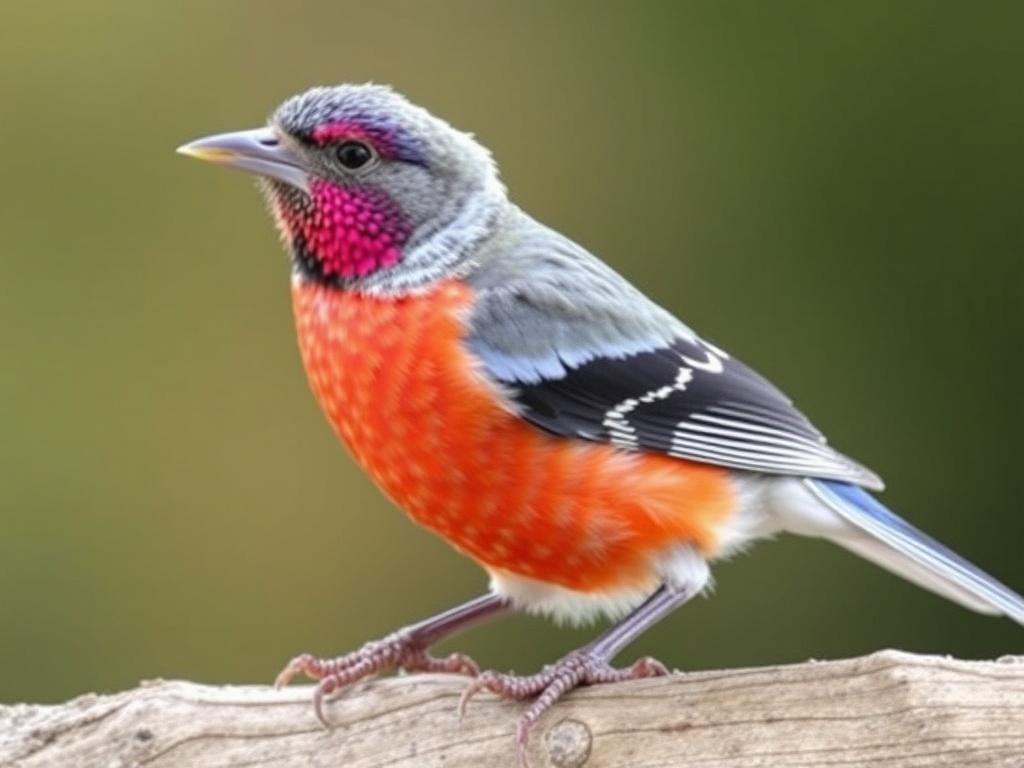
Predicting outcomes is complex. Some birds recover fully after treatment of a reversible cause; others develop chronic seizure disorders requiring lifelong management. Key factors that influence prognosis include:
- Cause of the seizures (infectious, toxic, metabolic vs. neoplastic/degenerative)
- Speed of treatment after onset
- Species and age of the bird — younger and species with greater neural plasticity may recover better
- Frequency and severity of seizures — frequent or continuous seizures are associated with worse outcomes
Owners must weigh the bird’s comfort, likelihood of recovery, and the demands of long-term medication and care. Many companion birds with well-managed epilepsy can have good quality of life with adjustments to housing, supervision, and consistent veterinary care.
When to Consider Euthanasia
This is a difficult topic, and decisions should be made with a veterinarian who knows your bird. Considerations include uncontrollable pain, repeated severe seizures despite treatment, severe neurologic dysfunction that prevents eating or normal behavior, and poor prognosis despite aggressive care. Compassionate quality-of-life assessment is essential.
Prevention and Risk Reduction
Not all neurologic disease can be prevented, but many risk factors can be minimized.
Diet and Nutrition
Offer a species-appropriate, varied diet: high-quality pellets formulated for the species, fresh vegetables, occasional fruits, and safe seeds or nuts as treats. Avoid nutritionally deficient diets such as seed-only regimens, which predispose to vitamin and mineral deficiencies.
Environmental Hazards
Reduce exposure to toxins:
- Never use Teflon-coated cookware near birds, and avoid heated nonstick surfaces.
- Store household chemicals, pesticides, and medications securely.
- Avoid exposure to heavy metals by using bird-safe cage toys and avoiding unknown metals.
- Keep potential toxic plants out of reach.
Vaccination and Biosecurity
In regions where specific avian viruses are prevalent and vaccines exist, follow regional veterinary recommendations. Practice good hygiene and quarantine new birds to reduce infectious disease spread.
Regular Veterinary Care
Routine check-ups catch early signs of disease, weight loss, or dietary problems. Early detection of systemic illnesses reduces the risk of secondary neurologic complications.
Species-Specific Notes: How Different Birds Show Neurologic Disease
Not all birds behave the same when ill. Understanding species tendencies helps interpretation.
Parrots (Psittacines)
Parrots are highly social and expressive. Neurologic disease often shows as behavioral changes — quieting, aggression, or feather-plucking — before obvious motor signs. Parrots are prone to nutritional deficiencies and toxin exposure in household environments.
Raptors and Birds of Prey
Raptors frequently present after trauma or with head wounds, and subtle neurologic deficits can impair hunting. Lead poisoning is a classic concern in these species due to ingestion of shot or contaminated prey.
Waterfowl and Poultry
In flocks, neurologic disease may be infectious and can spread rapidly. Behavioral changes, tremors, and loss of coordination can indicate viral or bacterial outbreaks.
Pigeons and Columbiformes
Pigeons are often used in studies of neurologic infection and may present with subtle circling or blindness when infected.
Diagnostic and Treatment Checklist: What to Bring to the Vet
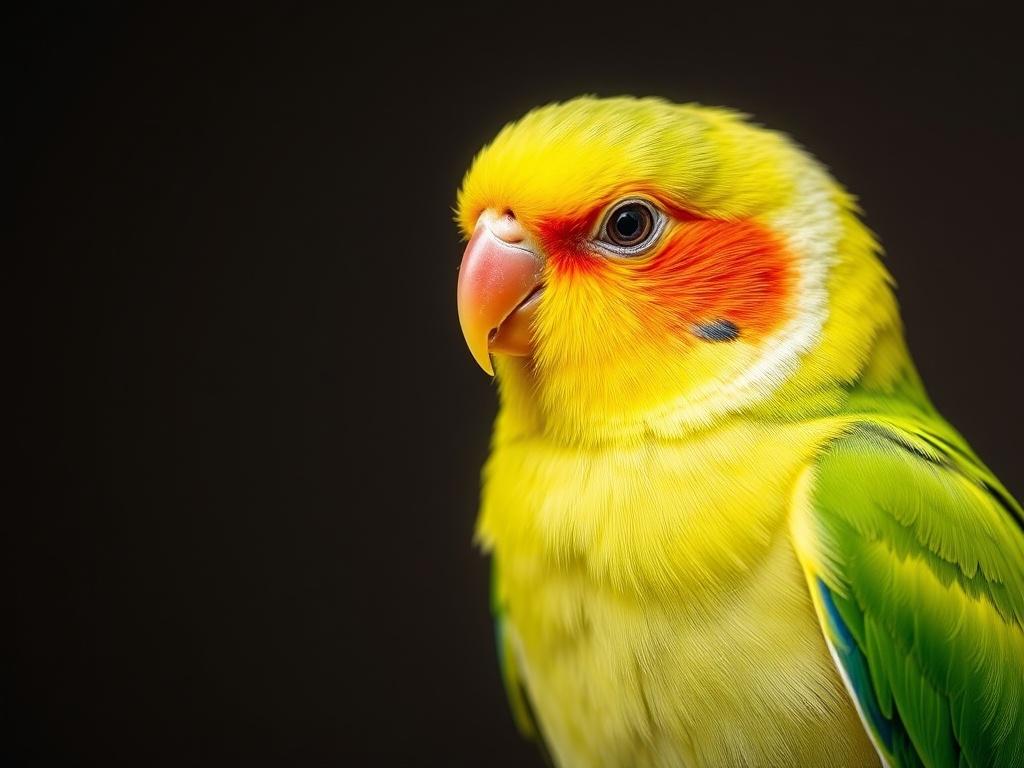
A prepared owner helps speed diagnosis. Bring the following if possible:
- Video of the episode(s)
- Complete diet history and a sample of the diet (food, treats)
- A list of medications, supplements, and recent chemical exposures
- Timeline of the problem and any changes in environment or flock
- Any fecal samples or records of recent illnesses in other birds
This information helps the veterinarian prioritize tests and treatments.
Table: Common Causes, Typical Signs, and First-Line Tests
| Cause Category | Examples | Typical Signs | Common Initial Tests |
|---|---|---|---|
| Infectious | Viral, bacterial, fungal, protozoal | Fever, lethargy, seizures, respiratory or GI signs | CBC, biochemistry, PCR/serology, cultures |
| Toxic | Heavy metals, PTFE fumes, pesticides | Sudden onset seizure, weakness, respiratory distress | History, radiographs (for metal), blood tests for metals |
| Metabolic/Nutritional | Hypoglycemia, vitamin deficiencies, organ failure | Seizures, weakness, appetite change | Glucose, electrolytes, liver/kidney panel, nutritional assessment |
| Trauma/Vascular | Head injury, hemorrhage, stroke | Acute neurologic deficits, seizures, palpable trauma | Radiographs, CT/MRI if available, physical exam |
| Neoplasia/Degenerative | Tumors, inherited conditions | Progressive neurologic decline, focal signs | Imaging (CT/MRI), biopsy if indicated |
Real-Life Examples (Composite Cases)
Real cases illustrate how variable outcomes can be.
Case 1: The Sun-Conure with Sudden Seizures
A 4-year-old sun-conure owner noticed a sudden episode of whole-body twitching and loss of balance. Video helped the vet diagnose a generalized seizure. Bloodwork revealed low blood glucose and mild liver enzyme changes. After emergency stabilization with fluids and correction of blood sugar, the bird recovered. Further history revealed recent fasting during travel and a diet heavy in sugary treats. Dietary correction and monitoring prevented recurrence.
This case highlights how metabolic causes can create dramatic emergencies and how relatively simple fixes can restore health.
Case 2: The Falcon with Head Trauma
A juvenile falcon was found after a collision, showing a head tilt and disorientation. Imaging revealed a small intracranial hemorrhage. The bird required supportive care and time to heal; some residual head tilt remained, but the bird returned to partial hunting capability. Trauma cases often need long recovery and species-appropriate rehabilitation.
Case 3: The Parrot with Chronic Seizures
A middle-aged African grey developed recurring seizures with no clear cause found after extensive testing. With careful medication management and environmental adjustments, seizure frequency decreased, and the bird retained good quality of life for several years. Chronic cases demonstrate the importance of long-term commitment and regular veterinary follow-up.
Frequently Asked Questions
People often have the same practical concerns. Here are clear answers to common questions.
Can my bird choke during a seizure?
Birds are less likely to choke in the way humans do because their breathing anatomy is different, but aspiration of food or liquid is possible during or after seizures if they’re fed too soon. Do not offer food or water until your bird is fully alert and able to swallow safely.
Are seizures contagious to other birds?
Seizures themselves are not contagious, but the underlying cause might be if it’s infectious. Isolate the affected bird until a vet rules out contagious disease.
How can I capture a video that helps the vet?
Keep your phone ready and focused on the bird. Record the whole episode, including the beginning and aftercare, and note the time and what preceded the event. Also note any environmental factors like new cleaning products or house guests.
Will my bird need lifelong medication?
Maybe. If the seizures are due to a reversible cause (toxin, metabolic), medication may be temporary. If the cause is idiopathic epilepsy or an irrecoverable brain lesion, lifelong therapy might be necessary. Regular vet follow-up and blood monitoring are important.
When to Seek Immediate Veterinary Care
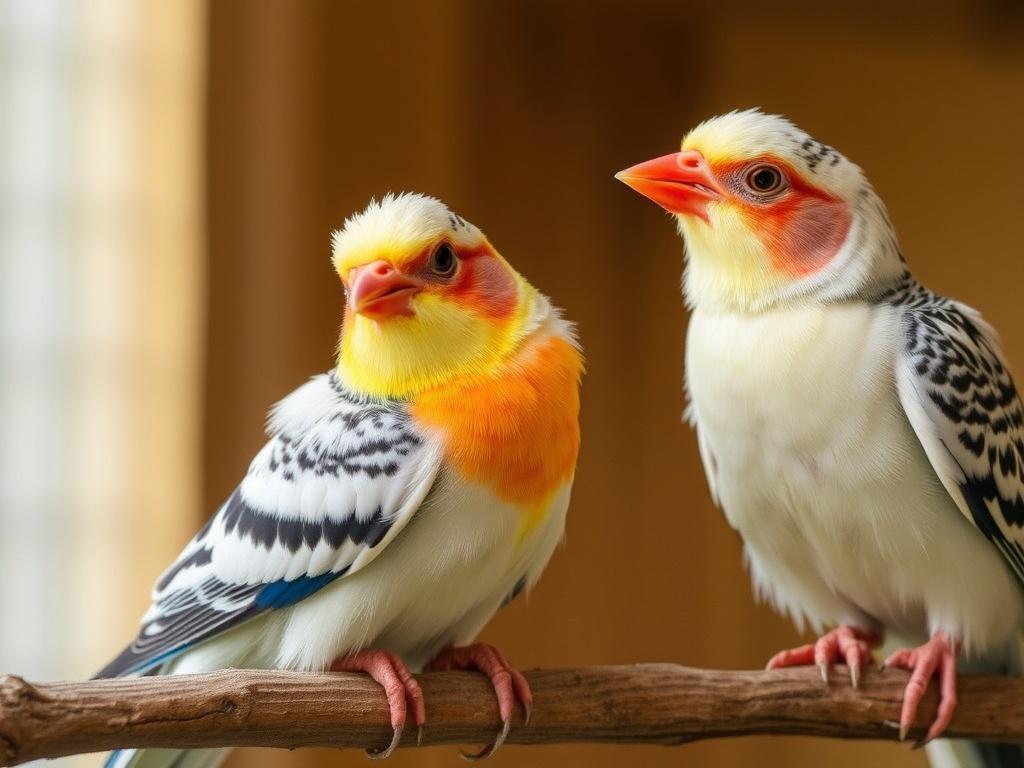
Head to an emergency avian veterinarian if any of the following occur:
- A seizure lasts more than a few minutes or seizures are repeated without full recovery between them
- Your bird cannot stand, breathe normally, or swallow after a seizure
- There was suspected toxin exposure or head trauma
- Signs worsen rapidly or involve severe respiratory distress
Keep emergency contacts for an avian-experienced clinic handy and consider travel plans in advance for remote areas where specialized care may be far away.
Practical Tips for Living with a Bird Prone to Neurologic Episodes
If your bird has a history of seizures or neurologic disease, minor adjustments can improve safety and quality of life.
Home Safety
- Lower perches to reduce fall risk and pad cage floors
- Remove open water dishes that could be splashed on the bird during seizures
- Cover sharp edges and keep the environment calm during the bird’s recovery periods
- Keep windows and doors closed while your bird is out of the cage to prevent collision risk if an episode occurs
Monitoring and Record-Keeping
Keep a seizure log noting date, time, duration, possible triggers, and recovery. This record is invaluable for adjusting treatment and detecting patterns.
Support Networks
Connect with avian support groups and your veterinarian. Practical advice from experienced owners and professionals helps navigate tough times and improves outcomes.
Research and Emerging Therapies
Avian neurology is a growing field. Research into viral causes, genetic predispositions, and pharmacokinetics of anticonvulsant drugs for different bird species is ongoing. Advanced imaging and minimally invasive surgical techniques are expanding diagnostic and therapeutic options for birds with tumors or structural brain disease. If conventional approaches fail, referral to a veterinary neurologist or a center with avian imaging capability may offer additional options.
Key Takeaway: Don’t Delay Seeking Help
Early recognition, video documentation, prompt veterinary evaluation, and appropriate diagnostics dramatically improve the chances of identifying treatable causes and achieving a good outcome. Even when a cure is not possible, targeted therapy and supportive care can preserve quality of life.
Summary Checklist for Bird Owners
- Know the signs: seizures can be dramatic or subtle — watch for head bobbing, circling, loss of balance, and behavioral changes.
- Record episodes: video and detailed notes help your veterinarian.
- Act fast: long seizures are dangerous. Keep emergency veterinary contacts ready.
- Protect the environment: reduce toxin exposures and feed a balanced diet.
- Follow-up: neurological problems often need ongoing care and monitoring.
Further Resources
Seek information from reputable sources: avian veterinarians, university veterinary teaching hospitals, and professional avian medicine organizations. Avoid unverified internet “cures” and supplements that may do more harm than good.
Conclusion
Seizures and neurological disorders in birds are complex and often frightening, but understanding the signs, causes, and appropriate responses can make a huge difference. Early veterinary assessment, careful history-taking, and targeted diagnostics give the best chance for identifying treatable causes and managing chronic conditions. With thoughtful home adjustments, good nutrition, and close collaboration with an avian veterinarian, many birds with neurologic disease can live comfortable and meaningful lives. If you suspect your bird is experiencing neurologic problems, don’t wait — record the event, gather useful history, and seek professional help as soon as possible.


